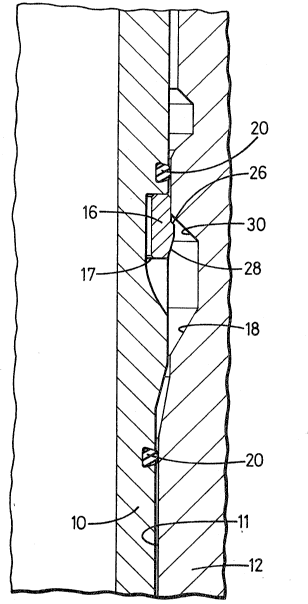Some of the information on this Web page has been provided by external sources. The Government of Canada is not responsible for the accuracy, reliability or currency of the information supplied by external sources. Users wishing to rely upon this information should consult directly with the source of the information. Content provided by external sources is not subject to official languages, privacy and accessibility requirements.
Any discrepancies in the text and image of the Claims and Abstract are due to differing posting times. Text of the Claims and Abstract are posted:
| (12) Patent Application: | (11) CA 2065169 |
|---|---|
| (54) English Title: | RETAINER RING |
| (54) French Title: | BAGUE DE RETENUE |
| Status: | Dead |
| (51) International Patent Classification (IPC): |
|
|---|---|
| (72) Inventors : |
|
| (73) Owners : |
|
| (71) Applicants : | |
| (74) Agent: | DEETH WILLIAMS WALL LLP |
| (74) Associate agent: | |
| (45) Issued: | |
| (22) Filed Date: | 1992-04-06 |
| (41) Open to Public Inspection: | 1992-10-10 |
| Availability of licence: | N/A |
| (25) Language of filing: | English |
| Patent Cooperation Treaty (PCT): | No |
|---|
| (30) Application Priority Data: | ||||||
|---|---|---|---|---|---|---|
|
ABSTRACT
A retainer ring for retaining generally
tubular member (10) within a generally cylindrical
bore (11). The ring comprises a split-ring like
member 16 which has a radially extending portion or
portions which define a shoulder 26 for engaging a
groove 18 in the wall of the bore 11. The ring is of
non-uniform diameter such that it exhibits a generally
wave-like form in its circumferential direction. The
retainer ring has application to retaining a wear
bushing in a wellhead system.
Note: Claims are shown in the official language in which they were submitted.
Note: Descriptions are shown in the official language in which they were submitted.

For a clearer understanding of the status of the application/patent presented on this page, the site Disclaimer , as well as the definitions for Patent , Administrative Status , Maintenance Fee and Payment History should be consulted.
| Title | Date |
|---|---|
| Forecasted Issue Date | Unavailable |
| (22) Filed | 1992-04-06 |
| (41) Open to Public Inspection | 1992-10-10 |
| Dead Application | 1995-10-08 |
There is no abandonment history.
| Fee Type | Anniversary Year | Due Date | Amount Paid | Paid Date |
|---|---|---|---|---|
| Application Fee | $0.00 | 1992-04-06 | ||
| Registration of a document - section 124 | $0.00 | 1993-06-25 | ||
| Maintenance Fee - Application - New Act | 2 | 1994-04-06 | $100.00 | 1994-03-31 |
Note: Records showing the ownership history in alphabetical order.
| Current Owners on Record |
|---|
| COOPER INDUSTRIES, INC. |
| Past Owners on Record |
|---|
| THORNBURROW, EDWARD T. |